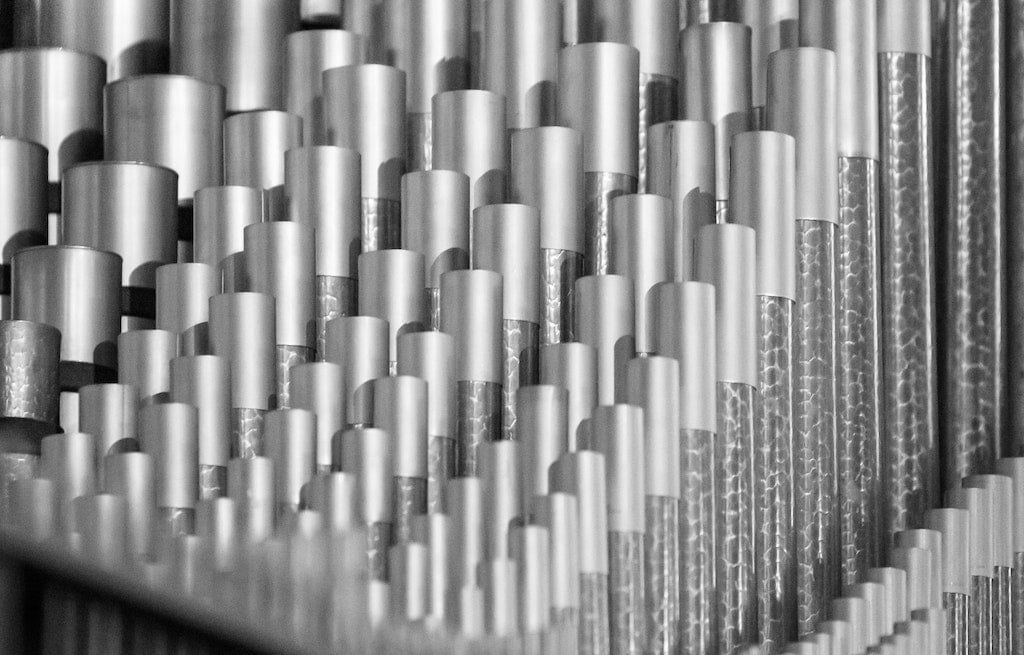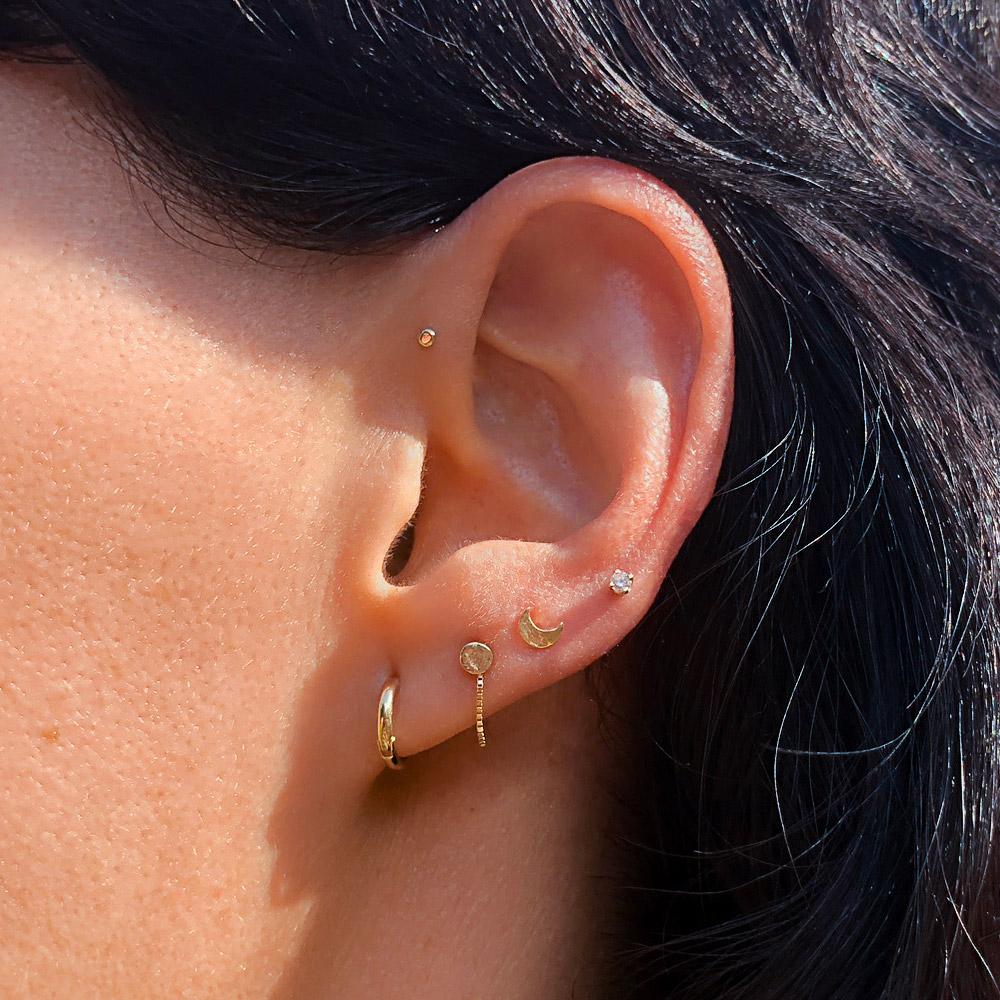By Meghan O'Neal
03/01/2022

If there’s one (false) thing that the ‘90s and early-2000s taught us, it’s that you can stick anything and everything into your piercing. We’d put safety pins and other non-jewelry items, and we all loved the cheap jewelry stores in the mall that would allow us to buy piles of jewelry with only $20.
What we’ve since learned—especially those of us who developed a metal allergy—is that you can’t stick just anything into your piercing. The materials in your jewelry must be biocompatible, which makes most materials ineligible for body jewelry.
The Association of Professional Piercers has outlined appropriate materials for body piercings, and as you can see, it’s not cut and dry; you have to be diligent and research the grade of the material to ensure that it’s safe for your piercing.
This brings us to stainless steel. While it’s a common material to use in inexpensive body jewelry, too often, jewelry manufacturers will use the wrong type of stainless steel. It’s your job to do your research to find something that’s safe.
Here’s a quick guide to stainless steel body jewelry and why you should consider opting for 14k gold instead.
Stainless steel is a group of alloys mixed together so that it’s rust-resistant and heat-resistant. It’s easy to clean, resilient, and it has a nice, grey tone which makes it a popular metal for a number of uses, from mechanics, to jewelry, to surgical implants.

The thing about stainless steel is that there are many different families of stainless steel—different types of stainless steel contain different alloys. Because of this, not all stainless steel will be safe for your body. Therefore, you need to do your research before purchasing body jewelry made from this material.
According to the Association of Professional Piercers, only “steel that is ASTM F-138 compliant or ISO 5832-1 compliant; ISO 10993-(6,10, or 11) compliant; or (EEC [European] Nickel Directive compliant” can be used in body piercings. This greatly limits the stainless steel jewelry that you can wear.
If those technical names overwhelm you, don’t worry; you don’t have to know what those terms mean. However, when you’re shopping for stainless steel body jewelry, you must know these grades and confirm that the stainless steel body jewelry is the correct grade before purchasing it.
The thing that makes stainless steel so durable and versatile is that it contains many alloys. Stainless steel that’s unsuitable for body jewelry contains alloys that can irritate your skin.
Even if you’ve never had metal sensitivities before, they can develop over time. One day, your piercing may start to become itchy, swollen, and flaky, and you won’t be sure why. Likely, the cause will be the non-biocompatible stainless steel in your jewelry.
Once your skin starts reacting to the jewelry, you will need to take it out immediately, lest you risk losing your piercing entirely.
Determining the type of stainless steel that your jewelry is isn’t easy.
Before you buy stainless steel jewelry, you should ask the retailer to let you know the type of stainless steel that they use in their jewelry. If they won’t provide the information or they don’t know, do not buy jewelry from that retailer—it’s a good sign that it’s not the right type of stainless steel jewelry.

If you already own stainless steel jewelry, you can do a few things to try and determine if your jewelry is the correct type of stainless steel:
If you can’t verify that your stainless steel jewelry is biocompatible, then you should not wear it. It’s unfortunate to have to throw a piece of jewelry away, but your health is more important.
Although we admit that we have a clear bias when choosing gold over stainless steel, there’s a reason why we only sell platinum and 14k gold jewelry.
As you can tell from the above, purchasing proper stainless steel body jewelry takes vigilance and research. However, when you’re purchasing 14k gold body jewelry, you only have to check one thing to ensure that the material is biocompatible: it’s nickel-free and cadmium-free.

Additionally, 14k gold is 58.5% gold. (The rest contains alloys that improve the color and durability of the gold.) Stainless steel on the other hand, contains multiple alloys. While alloys themselves aren’t terrible, there are some alloys, like nickel, that can irritate the skin. The more alloys your jewelry contains, the more you have to pay attention to ensure that your jewelry is biocompatible.
Here at FreshTrends, all of our jewelry is nickel-free, and it contains only biocompatible materials. You can’t get that same guarantee from other online body jewelry retailers, especially if they sell stainless steel body jewelry.
While it is possible to buy stainless steel body jewelry, it requires a ton of research, which isn’t necessarily something that you want to have to do in order to go on a shopping spree.
There’s nothing wrong with stainless steel body jewelry, but it’s incredibly difficult to determine if your stainless steel body jewelry is biocompatible. For this reason, we recommend staying away from stainless steel. Instead, try titanium for your initial jewelry (which contains almost no alloys, and it’s inexpensive) then, once your swelling has gone down and it’s time to buy your permanent piece, switch to 14k gold. It may be more expensive, but it looks fantastic, it lasts a lifetime, and it’s safe for your piercing.
Unconvinced that 14k gold is the way to go? Check out some of our favorite pieces, and see the difference.
One Reply to “14k Gold Versus Stainless Steel: Which Material Is Better for Body Jewelry?”
Kathy Hardy, 10 May 2021
Hello,
Your blog article very useful and informative.
Thanks.